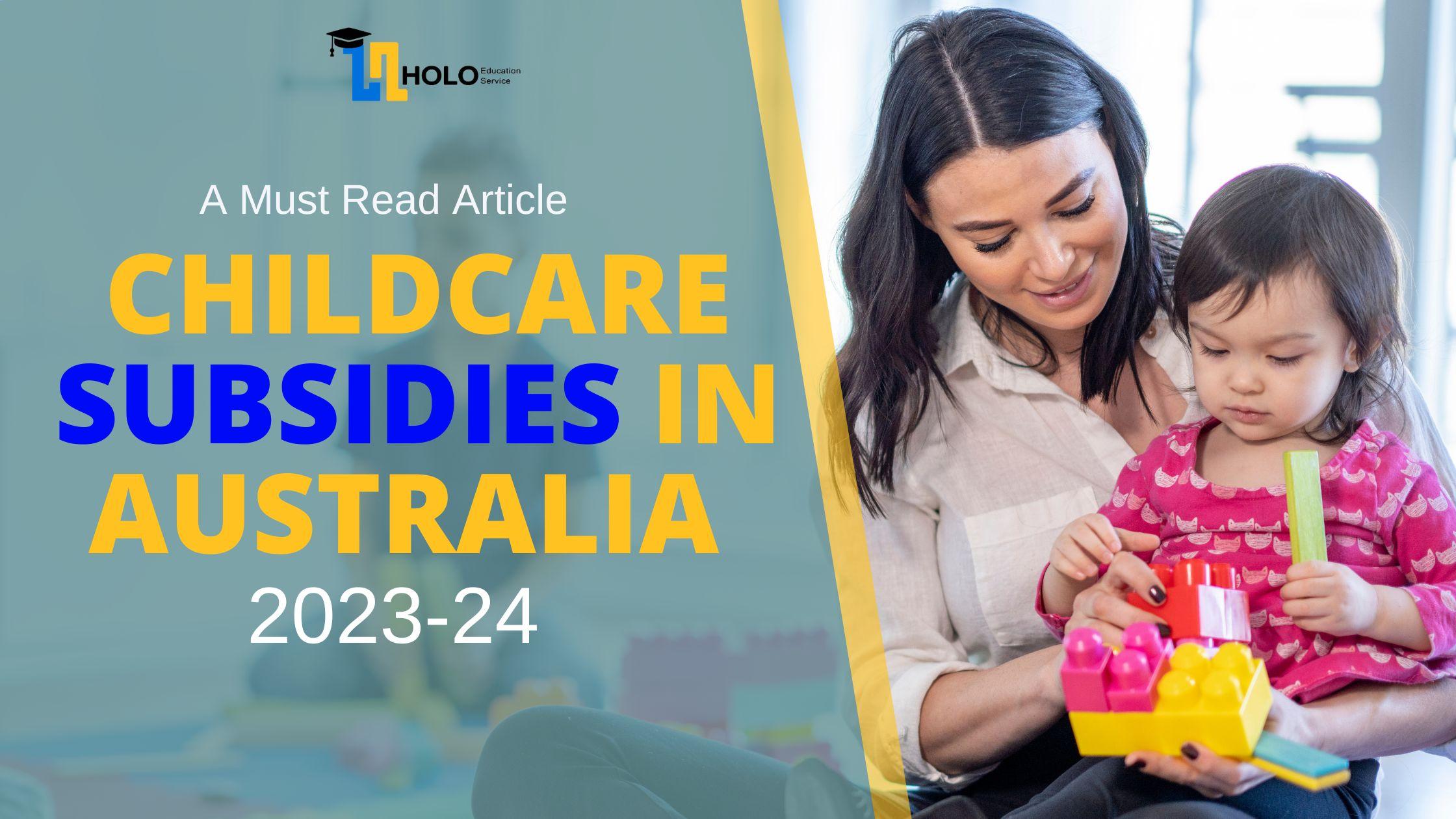Childcare Subsidies in Australia: Albanese Government’s Budget Boost
June 15, 2023 2023-06-15 14:29Childcare Subsidies in Australia: Albanese Government’s Budget Boost
Childcare Subsidies in Australia: Albanese Government’s Budget Boost

Childcare subsidies in Australia have been a topic of discussion and debate for several years. With rising living costs, families have been eagerly awaiting relief in the form of increased subsidies. In response to these concerns, the Albanese government has unveiled its first full-year budget, which includes a significant boost in childcare subsidies. However, advocates are concerned that the government has not addressed the issue of the activity test, which may hinder accessibility to childcare for some families.
Increased Childcare Subsidies for 1.2 Million Families
The treasurer, Jim Chalmers, and ministers for early childhood and education have released figures showing that approximately 1.2 million families will benefit from the increased childcare subsidies proposed by the Albanese government. These subsidies aim to alleviate the burden of rising living costs and make childcare more affordable for Australian families.
Under the new legislation, subsidy rates for 97% of families earning less than $530,000 will be lifted. This policy is a significant step towards providing financial relief to families struggling with childcare expenses. The government’s commitment to supporting families through increased subsidies is commendable.
Budget Allocation for Childcare Subsidies
The Albanese government’s budget includes a substantial increase in spending on childcare subsidies over the next four years. The total spending on subsidies is projected to reach $55.3 billion from 2023-24, representing a significant increase from the $46.3 billion promised by the Coalition in their previous budget.
In the first year of the new subsidy package, an additional $1.4 billion will be allocated, bringing the total to $12.7 billion. This increase in funding is a positive step towards reducing the financial burden on families and ensuring that childcare remains accessible and affordable for all.
The Activity Test and its Implications
However, advocates are concerned that the Albanese government has not addressed the issue of the activity test in its budget allocation. The activity test is a policy that reduces subsidies for childcare when one parent works less than 15 hours a week. This test has been criticized for excluding low-income households and depriving children of early childhood education.
According to the Minderoo Foundation’s Thrive by Five campaign, abolishing the activity test alone would cost $1.3 billion in 2023-24. This indicates that the government’s budget may not have allocated sufficient funds to remove the test entirely. The calls to abolish the activity test have been supported by the women’s economic equality taskforce and the economic inclusion advisory committee, both of which argue that the test hinders economic inclusion and disadvantages children.
Urgent Calls for the Abolition of the Activity Test
Advocates are engaged in a final-week push to convince the Albanese government to abolish the activity test before the May budget is finalized. Both the women’s economic equality taskforce and the economic inclusion advisory committee have urged the government to take action on this issue. These organizations argue that the activity test undermines economic inclusion, particularly for women, and causes additional hardship for children.
The Albanese government has promised a “significant response” to the committee report in the budget. However, it remains unclear whether individual recommendations, including the abolition of the activity test, will be supported. The government’s stance on this matter will have a significant impact on the accessibility and affordability of childcare for Australian families.
Importance of Affordable Childcare
Making childcare more affordable is crucial for alleviating the cost of living pressures faced by working Australians. The treasurer, Jim Chalmers, emphasized that affordable childcare is one of the most important measures the government can take to support families without adding to inflation. The education minister, Jason Clare, also highlighted the role of increased childcare spending in helping parents return to paid work or increase their working hours.
Furthermore, the early childhood education minister, Anne Aly, emphasized the long-term benefits of early childhood education on children’s development. Studies have shown that children who have access to early childhood education demonstrate improved literacy and numeracy skills, better health outcomes, and are more likely to secure higher-paying jobs in the future. Investing in childcare is not only essential for families but also contributes to the overall development and well-being of children.
Additional Investment in Early Childhood Education and Care Sector Workers
In addition to increased childcare subsidies, the Albanese government’s budget includes $72.4 million over five years to enhance the skills and training of early childhood education and care sector workers. This funding will benefit more than 80,000 early childhood educators by providing opportunities for professional development.
The package aims to improve the quality of childcare services by ensuring that educators have access to the necessary training and development opportunities. By investing in the workforce, the government recognizes the important role that early childhood educators play in shaping the lives of young children and supporting their families.
Conclusion
The Albanese government’s budget proposal for increased childcare subsidies is a step in the right direction towards providing relief to Australian families. However, concerns remain regarding the activity test, which may hinder accessibility to childcare for some families. Advocates continue to push for the abolition of the test, highlighting its negative impact on economic inclusion and children’s well-being.
Affordable childcare is crucial for working families, and the government’s commitment to making childcare more accessible and affordable is commendable. Additionally, the investment in the training and development of early childhood education and care sector workers demonstrates a commitment to improving the quality of childcare services.
As the government finalizes its budget, it is essential to consider the voices of advocates and the long-term benefits of affordable childcare. By addressing the concerns surrounding the activity test and providing adequate funding, the government can ensure that Australian families have access to high-quality childcare, supporting both parents’ participation in the workforce and children’s overall development.
Search
Categories
- 10 Tips for International Students to Adapt to Studying in Australia (1)
- 2023 (1)
- A Comprehensive Guide to Certificate II in Community Pharmacy SIR20116 (1)
- A Guide for Fitness Professionals (1)
- AUR30620 – Certificate III In Light Vehicle Mechanical Technology (1)
- Australia: The Ultimate Study Destination for International Students (1)
- Balancing Work and Study as an International Student in Australia (1)
- BSB50320 Diploma of Human Resource Management (1)
- BSB50420 – Diploma of Leadership and Management (1)
- Celebrating Western Australia Day (1)
- Certificate IV in Disability (1)
- CHC30121 – Certificate III in Early Childhood Education and Care (1)
- CHC33015 – Certificate III in Individual Support (1)
- CHC43015 Certificate IV in Ageing Support (1)
- CHC43115 – Certificate IV in Disability (1)
- CHC43115- Certificate IV in Disability (1)
- CHC43315 Certificate IV in Mental Health (1)
- CHC50121 Diploma of Early Childhood Education and Care (1)
- CHC51015-Diploma-of-Counselling- (1)
- CHC52015 – Diploma of Community Services (1)
- Childcare Subsidies in Australia (1)
- Choosing the Right Australian University: Factors to Consider (1)
- CPC30220 Certificate III in Carpentry (1)
- CPC30620 – Certificate III in Painting and Decorating (1)
- CPC40120 Certificate IV in Building and Construction (1)
- FNS40222 Certificate IV in Accounting and Bookkeeping (1)
- Healthcare and Insurance in Australia for International Students (1)
- HOLO EDUCATION SERVICES (21)
- How to Collect Evidence for RPL (1)
- Navigating RPL Success: Avoiding Common Mistakes in Your RPL Application (1)
- SHB50121 – Diploma of Beauty Therapy (1)
- SIT30816 Certificate III in Commercial Cookery (1)
- SIT40516 certificate IV in commercial cookery (1)
- SIT50416 Diploma of Hospitality Management (1)
- SIT60322 Advanced Diploma of Hospitality Management (1)
- TAE40116 Certificate IV in Training and Assessment (1)
- The Australian Education System (1)
Latest Posts
Popular Tags






